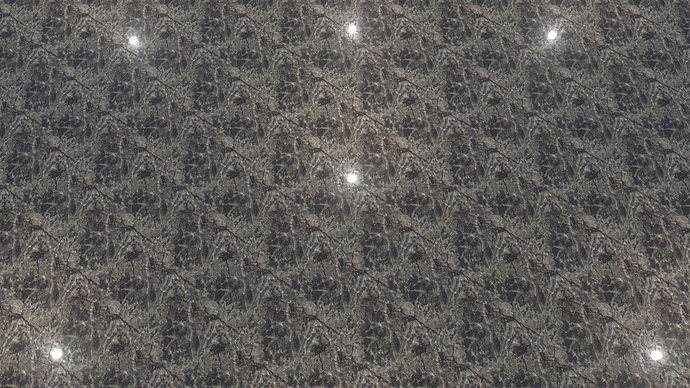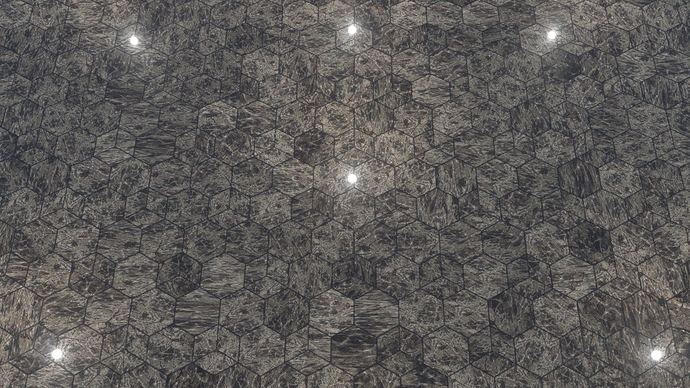I prefer to think of it as being “for dumb artists” ![]() If using this for the shading, you’re pretty much set for having it setup correctly. If like before, you downloaded or reused from old downloaded asset or trusted youtube tutorials or did your own guesswork - you’re pretty much setup for getting it wrong.
If using this for the shading, you’re pretty much set for having it setup correctly. If like before, you downloaded or reused from old downloaded asset or trusted youtube tutorials or did your own guesswork - you’re pretty much setup for getting it wrong.
And, it’s only the shading stage. The images below use the principled shader, but for the tiled version there are many nodes doing the tiling. Untiled, a seamless 2k texture shows obvious repeats and is completely unusable as a floor texture.
Tiled using a node setup, same seamless 2k texture you can find areas telling you that it’s from the same texture, but you really have to look for it. If I mixed two seamless textures using different coordinates and scaling and rotation per tile “ID”, it would hide the fact even more.
The idea I’m using is combining two hexagonal texture generators (from brick procedural addon I think) which both outputs grout and “Cell ID”. These IDs goes through noise texture and is added together. Then I add that to object texture coordinates, but also R rescales X, G rescales Y, and B rotates the actual texture differently for each cell. With 2k textures I can scale it bigger and help prevent this lookup to result in too equal sections being used. Well, most of the time. If you look hard, you’ll see neighboring parts obviously coming from the same area of the texture, x and y and rotation outputs not doing enough to hide it (a different seed would help). But still, it looks tons better than simply feeding it a seamless tiled image:

